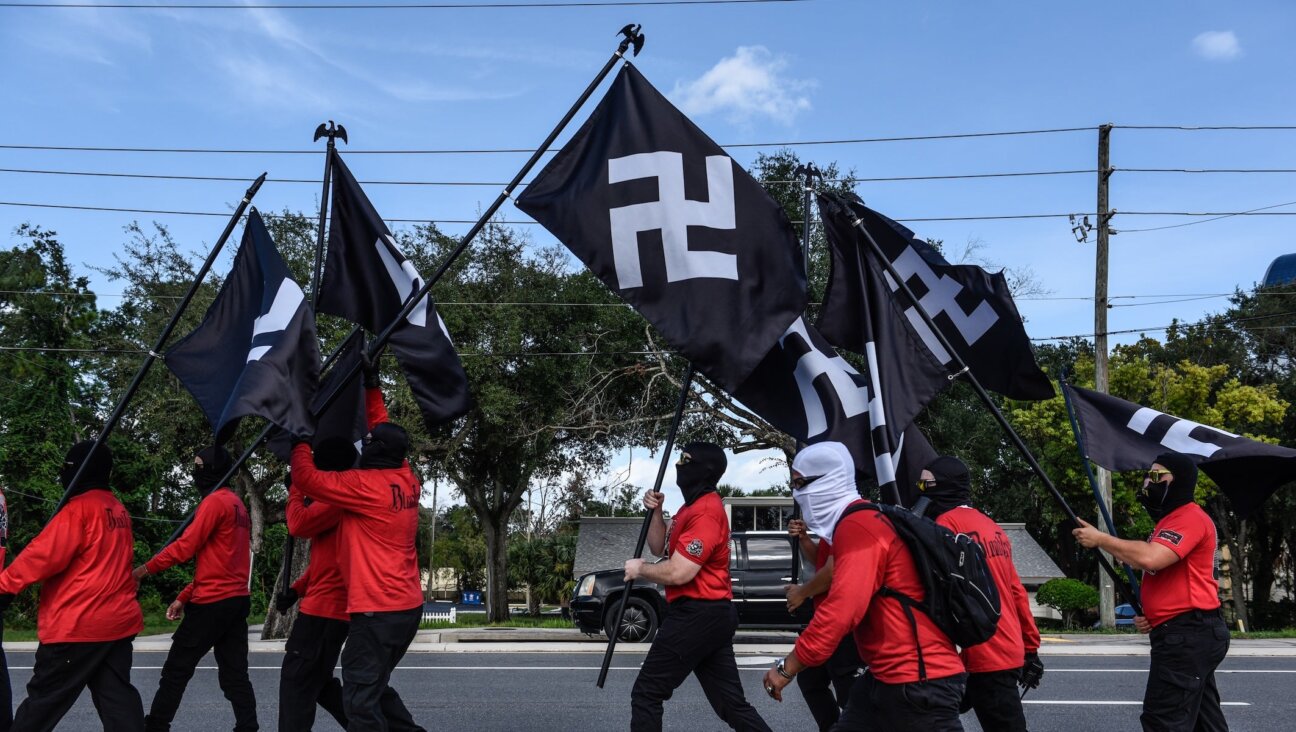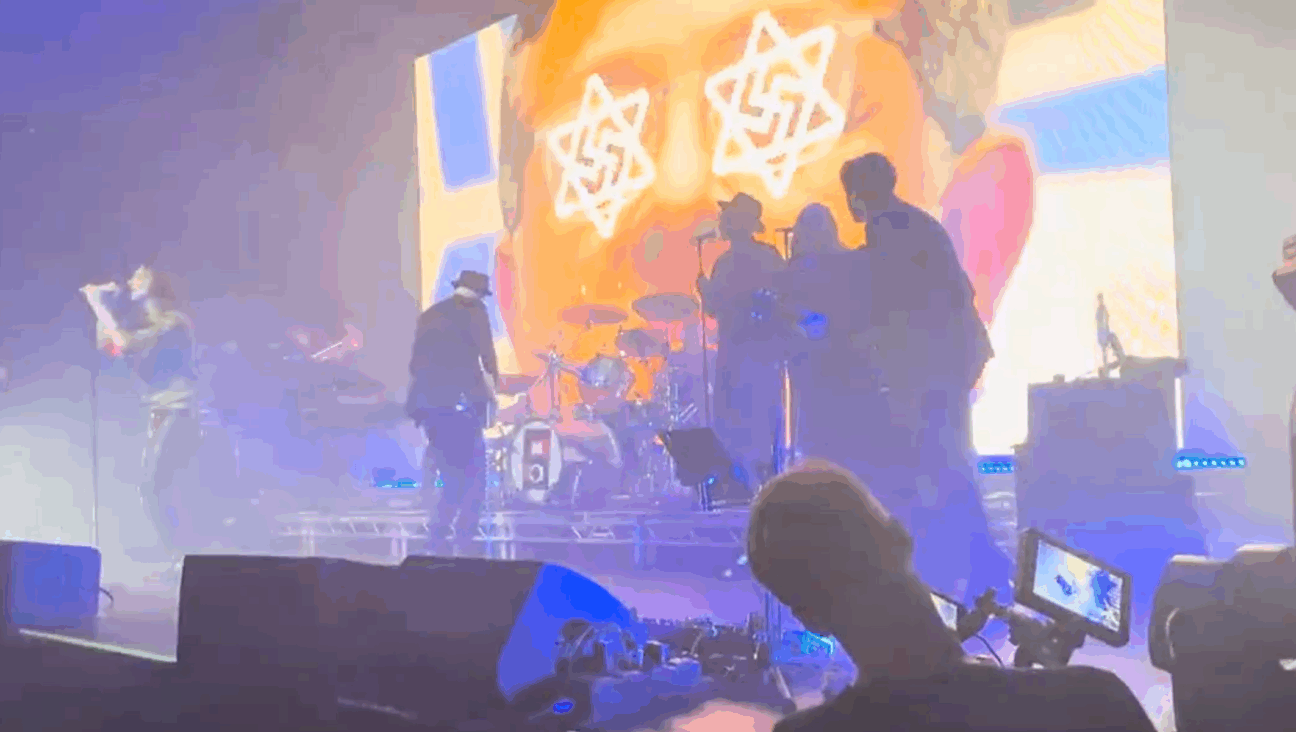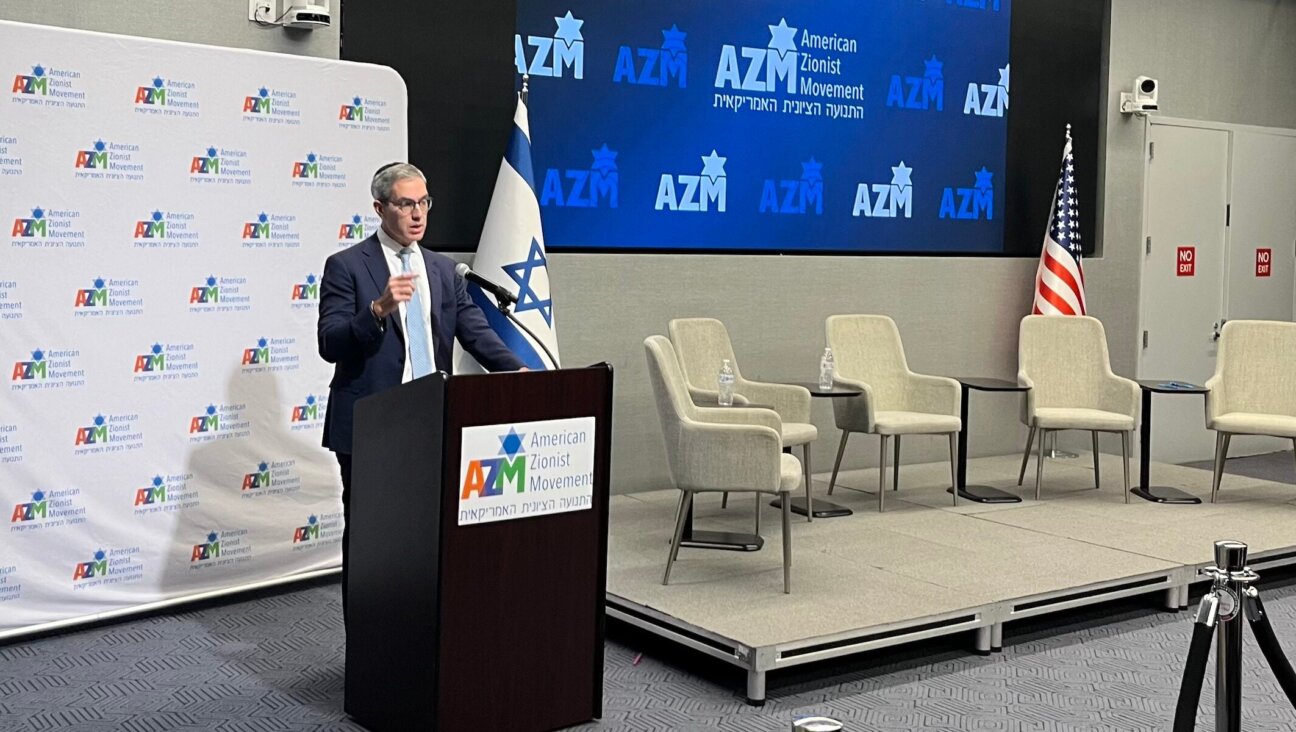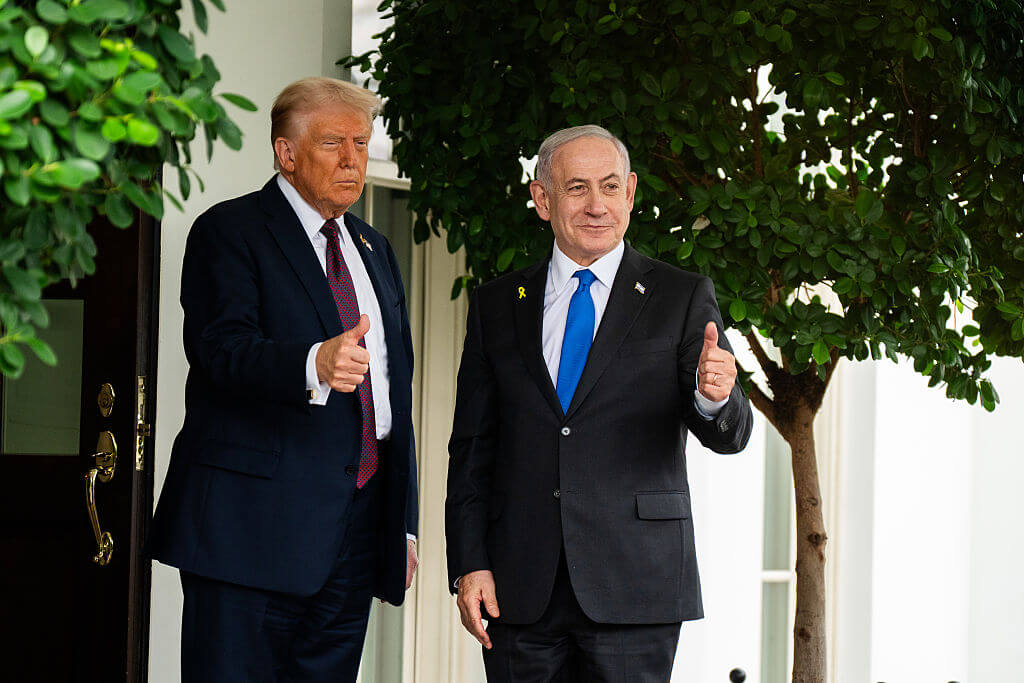Jewish groups welcome ceasefire plan as a step toward a ‘lasting regional peace’
All welcome the release of hostages in statements that downplay a community’s divisions over Israel
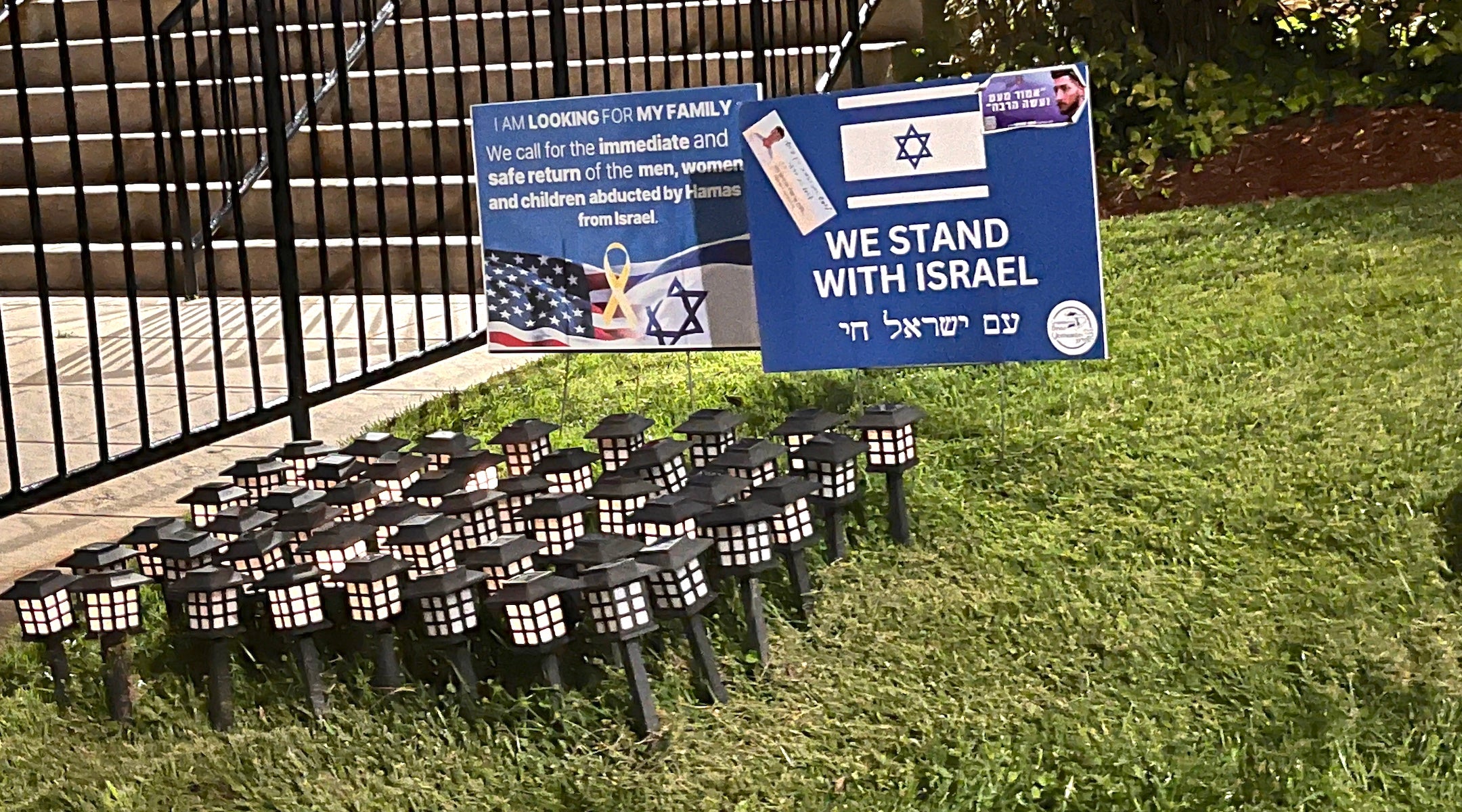
A synagogue in Teaneck, New Jersey displays lanterns representing the hostages still alive in Gaza and the bodies of those who are also slated to be returned under a deal between Israel and Hamas, Oct. 8, 2025. Photo by JTA
(JTA) — Jewish organizations across the ideological spectrum offered cautious optimism following the announcement of the first phase of a Gaza peace agreement, expressing profound relief at the planned return of hostages living and dead and tentative hopes that the plan might lead toward lasting regional peace.
As for what such a last peace might look like, only groups that have consistently advocated for a two-state solution offered a specific vision, putting their hopes in a solution that is implicit in the Trump administration’s 20-point peace plan, but which Israeli Prime Minister Benjamin Netanyahu rejects adamantly.
Nearly all the organizations noted that the war began with Hamas’s deadly attacks on Israel on Oct. 7, 2023, and urged “vigilance” that Hamas would uphold its side of any agreement.
“This development represents a hopeful step toward resolving the conflict, securing the release of all hostages, and establishing the conditions for lasting peace and security in the region,” read a statement by Betsy Berns Korn and William C. Daroff, the chair and CEO, respectively, of the Conference of Presidents of Major American Jewish Organizations. “This moment demands unity, resolve, and the moral clarity to ensure that peace and security endure and every hostage returns home.”
Federations similarly welcomed the deal for its humanitarian implications, with the Jewish Federations of North America saying “our prayers are answered — not completely, for the pain of loss remains — but with the long-awaited promise of healing, renewal, and hope.”
Groups also thanked the Trump administration for brokering the deal. The American Israel Public Affairs Committee said in its statement that it “applauds President Trump and his negotiating team for this tremendous achievement and for working together with Israel to broker this peace plan.”
AIPAC also framed the last two years as an affirmation of the “enduring partnership between the United States and our ally Israel,” despite cracks that showed during the Biden administration and to a lesser extent under Trump.
A lobbying group that tends to reflect the policies of the sitting Israeli government, AIPAC also spoke in brief of what some are calling “the day after,” saying that the peace deal “creates a tremendous opportunity to forge a better future for Israelis, Palestinians, and people across the Middle East.”
J Street — the advocacy group often described as the progressive counterpart to AIPAC — did not mention the two-state solution in a statement by its president, Jeremy Ben-Ami. But Ben-Ami did urge the parties to take steps toward realizing the “full US-backed 20-point plan — one that ensures Israel’s security, ends Hamas’s reign of terror, delivers a massive surge of humanitarian aid and sets the region on a path toward a comprehensive and permanent peace.”
In the 19th point of its 20-point plan, the White House suggested without making any pledges that “the conditions may finally be in place for a credible pathway to Palestinian self-determination and statehood, which we recognise as the aspiration of the Palestinian people.” And while a number of key European allies recently recognized a Palestinian state, the idea has been effectively stalled and faces formidable obstacles on the ground, including strong opposition by both the current Israeli government and key segments of the Israeli and Palestinian publics.
Other groups were more explicit in reiterating the two-state solution. The Israel Policy Forum, founded to advance the idea of two states, said it hoped the agreement might pave the way for “rekindled Israel-Arab diplomacy, a reformed Palestinian Authority with new, empowered, and legitimate leadership, an eventual expansion of the Abraham Accords that advances Israel’s integration in the Middle East, and the pursuit of a viable political horizon to the Israeli-Palestinian conflict based on two states.”
The Reform movement, in a statement signed by the leaders of its rabbinical, congregational and seminary arms, also hoped the ceasefire would create the conditions for renewing a solution which the statement acknowledged “feels remote at this point.” Nevertheless, according to the statement, “a two-state solution in some configuration must remain the worthy, long-term goal for Israelis and Palestinians as they contemplate a future with safety, dignity, and hope for all.”
Further to the left, Jewish groups welcomed the return of the hostages but also reiterated their criticism of Israel’s prosecution of a war whose death toll, according to the Hamas-controlled Gaza health ministry, surpassed 67,000.
Partners for Progressive Israel called the agreement “a victory for the hostage families in Israel and their supporters” as well as “the many international bodies who have sought to hold Hamas and this Israeli government accountable for the war crimes perpetrated in the last two years.”
While few right-leaning groups commented on the deal in the hours after its announcement, which also coincided with the end of the first two days of Sukkot, Religious Zionists of America-Mizrachi welcomed the news, calling it “a potentially hopeful step toward restoring calm and securing the release of Israeli hostages.”
RZA-Mizrachi’s president, Steven M. Flatow, whose daughter Alisa Flatow was killed in a suicide bombing near a Jewish settlement in the Gaza Strip in 1995, also warned that “Hamas’s word is worth little.” He cautioned that any plan’s success “depends entirely on whether Hamas and its supporters can be trusted to abide by their commitments—a lesson history teaches us to approach with clear eyes.”


